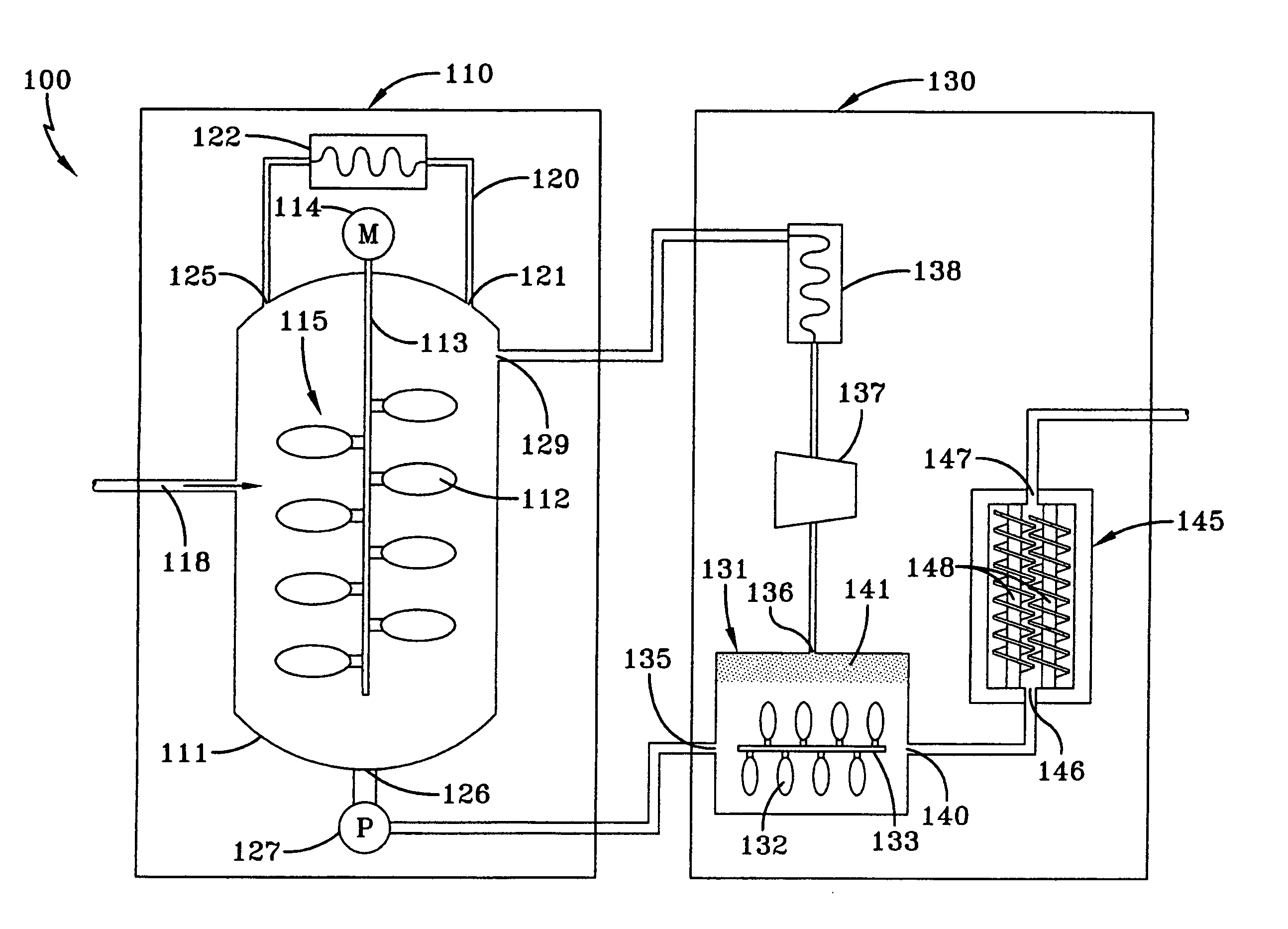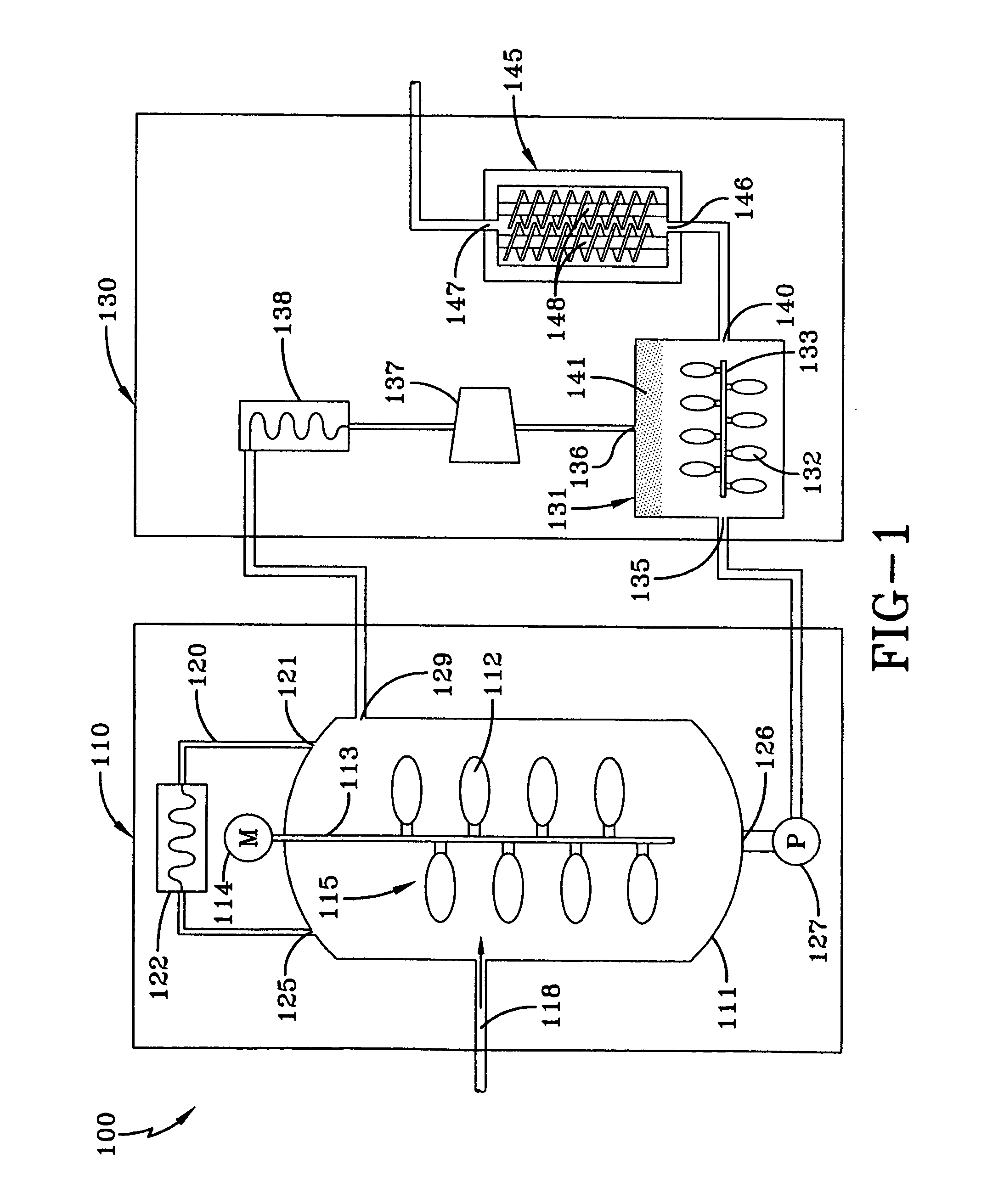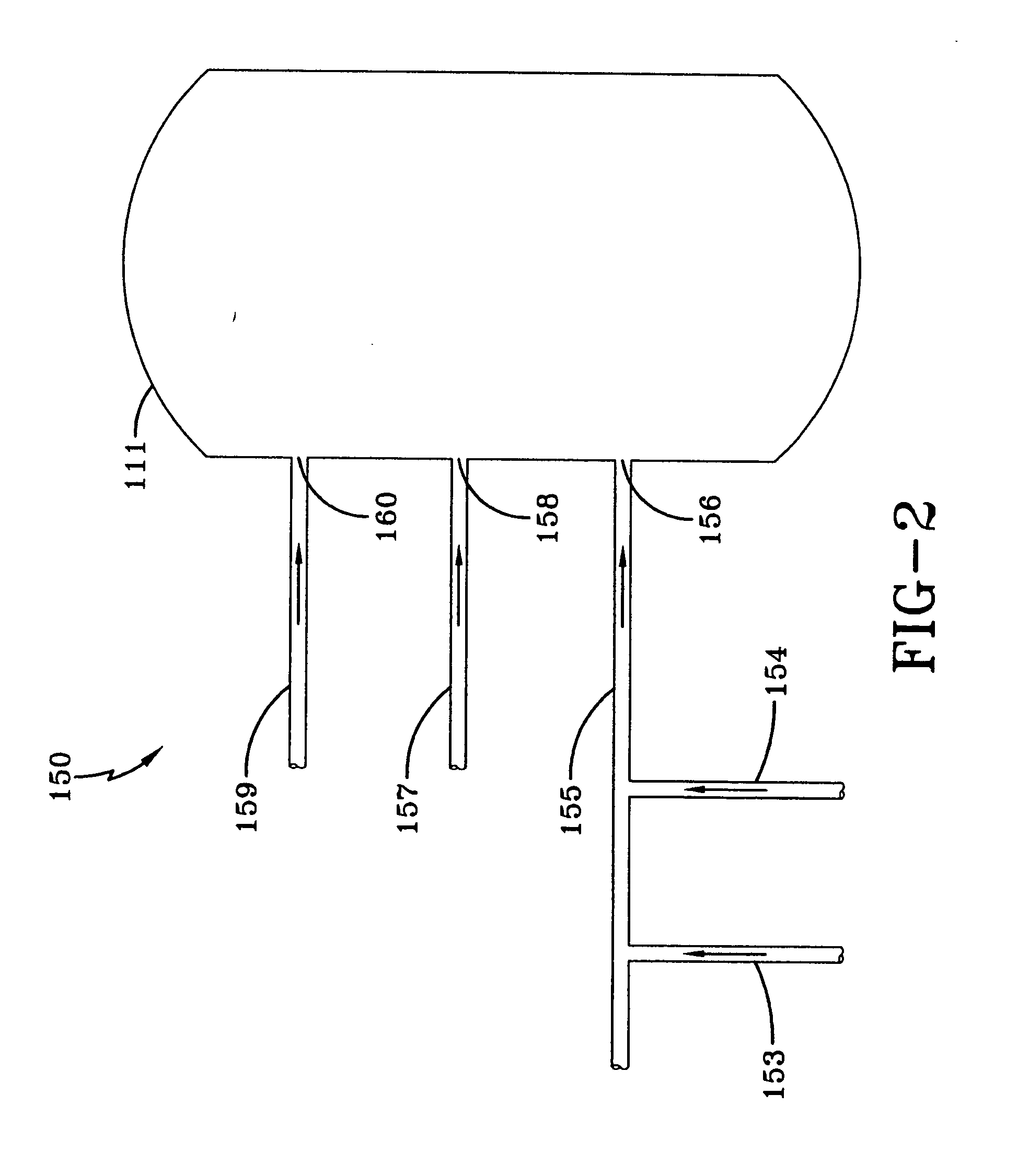Bulk polymerization process
a polymerization process and polymerization technology, applied in the field of bulk polymerization monomer processing, can solve the problems of inability to achieve strong and elaborate stirring equipment, difficult temperature control, and inability to achieve commercially successful bulk polymerization processes
- Summary
- Abstract
- Description
- Claims
- Application Information
AI Technical Summary
Benefits of technology
Problems solved by technology
Method used
Image
Examples
Embodiment Construction
[0010] The present invention provides a method for the continuous production of polydienes, the method comprising the steps of (a) adding liquid conjugated diene monomer and a coordination catalyst system to a first vessel to achieve a liquid polymerization medium, where the polymerization medium includes less than 50% by weight organic solvent, (b) allowing the catalyst to polymerize the monomer into polydienes, which increases the temperature of the polymerization medium and converts a portion of the monomer to a gas-phase monomer, (c) agitating the polymerization medium to thereby facilitate conversion of a portion of the monomer to the gas-phase monomer, (d) removing the gas-phase monomer from the vessel, (e) optionally condensing the gas-phase monomer that is removed from the vessel to liquid monomer, (f) optionally transferring the condensed liquid monomer back to the first vessel, (g) removing a portion of the polymerization medium from the first vessel in order to maintain a...
PUM
| Property | Measurement | Unit |
|---|---|---|
| Temperature | aaaaa | aaaaa |
| Temperature | aaaaa | aaaaa |
| Fraction | aaaaa | aaaaa |
Abstract
Description
Claims
Application Information
 Login to View More
Login to View More - R&D
- Intellectual Property
- Life Sciences
- Materials
- Tech Scout
- Unparalleled Data Quality
- Higher Quality Content
- 60% Fewer Hallucinations
Browse by: Latest US Patents, China's latest patents, Technical Efficacy Thesaurus, Application Domain, Technology Topic, Popular Technical Reports.
© 2025 PatSnap. All rights reserved.Legal|Privacy policy|Modern Slavery Act Transparency Statement|Sitemap|About US| Contact US: help@patsnap.com



